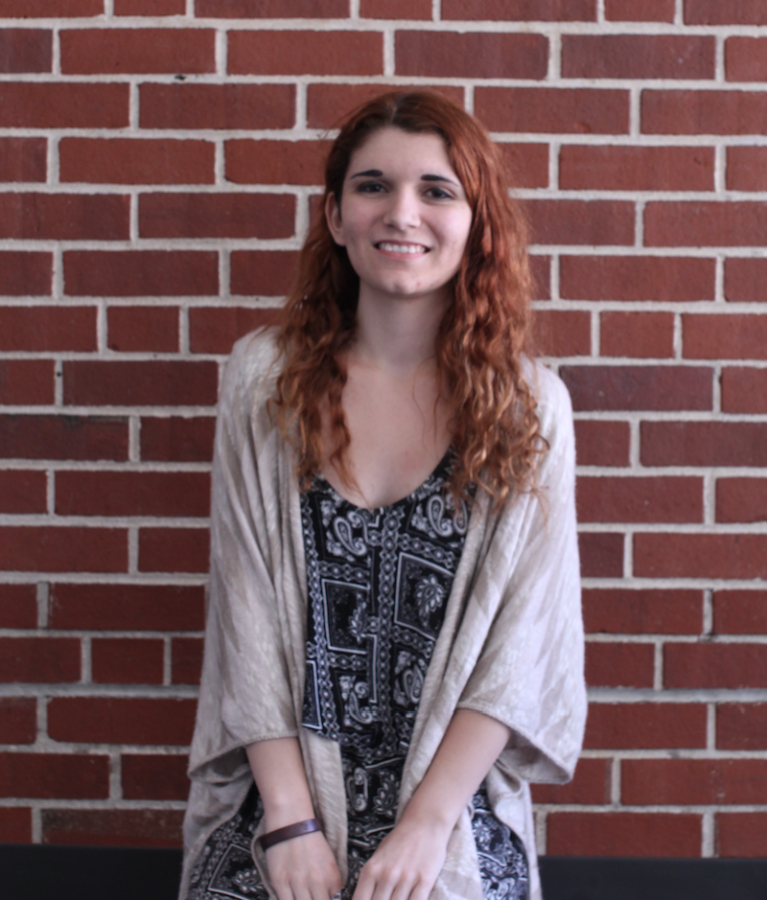13 Ways “13 Reasons Why” Got It All Wrong
A (baker’s) dozen thinly disguised rants
April 11, 2017
Author’s Note: This so-called review is tongue-in-cheek, and should be taken as such. That said, I do stand by it. Oh, and it’s littered with spoilers.
I can’t remember if I read “Thirteen Reasons Why” at age 13 or 14, but it was somewhere in that time period where the world is clearly out to get you and your angst knows no bounds.
I loved it.
Keep in mind, at this particular point in my life, I also loved “Catcher in the Rye” and would hear no criticism of it. I am not by any means claiming to be wise at age 18. But I think for most of us, our 18-year-old selves are much more rational than our 14-year-old counterparts. In my case, I still have a certain appreciation for “Catcher in the Rye” and its significance in the literary canon. But I’m much less impressed with Holden Caulfield himself, and have come to recognize his inherent whininess adults had always complained about.
“Thirteen Reasons Why” and it’s adaptation, “13 Reasons Why” have both a protagonist and a deuteragonist. The posthumous Hannah Baker serves as the protagonist, and the story follows the devolution of her social life up to her eventual suicide. Before her death, Hannah records the stories of the 13 people she feels contributed to her decision to kill herself. She then sends the tapes (yes, she used actual cassette tapes; yes, it takes place in the 21st century) to the first person on her list, leaving specific instructions for them to follow. After listening to the tapes, the first person is meant to send the tapes to the second person, the second person to the third person, and so on.
This is where Clay, our deuteragonist, comes in. In the book, Clay is ninth on the list; in the series he is 11th. Clay and the reader follow Hannah’s story together. The bones of the story are consistent throughout both versions, but various significant details are changed.
Like “Catcher in the Rye” my affinity for “Thirteen Reasons Why” has diminished over the past four years. Unlike “Catcher in the Rye” I do not have any lingering appreciation for the book. I might as well say it now: I’ve come to realize that the book is utter garbage. And it’s adaptation isn’t much better. If the book is garbage, the Netflix miniseries (released on March 31) is a veritable dumpster fire.
And these are my very own 13 reasons why.
- In this case, the first reason is the most important, so I will do my best to emphasize it: Neither the book nor the series make any mention of mental illness. For a story centered around suicide, this error is rather egregious. 90 percent of individuals who die by suicide are mentally ill. In all likelihood, Hannah is one of the 90 percent. But this possibility goes unacknowledged by every single character. I truly cannot get over this oversight. Even if the story were otherwise flawless, this would ruin it for me. It’s absolutely asinine to attempt a dialogue about suicide without a simultaneous discussion about mental illness. It’s like if we tried to discuss sexually transmitted diseases without ever mentioning safe sexual practices. Just like the best way to prevent STDs is appropriate condom usage, the best way to prevent suicide is proper treatment for mental illness. But therapy, medication, and even the DSM-V seem to be nonexistent in this story. And again, that is an unforgivable misstep.
- I’m sure that it was entirely unintentional, but both the book and the series have the unfortunate effect of glorifying suicide. The people Hannah sends the tapes to are clearly damaged after listening to them, which is exactly what she wanted. She got her revenge, but she didn’t live to see it happen. And that is not something to encourage, but it is easy to imagine that a struggling young teenager could see Hannah’s story as an example.
- Speaking of that, showing the suicide onscreen was an incredibly poor choice. Suicide awareness research tells us that it is counterproductive. It was also rather gruesome. I couldn’t watch, and I’m sure I’m not alone.
- The story takes the easy way out and paints Clay as a good guy. Wouldn’t it be more interesting to tell the story from the perspective of someone who actually wronged Hannah? Someone like Tyler, or Justin, or Marcus. Someone who, in the process of being a typical insensitive teenager, had a much greater impact than they intended. Or Courtney, who has her faults, but the possibility of an incredibly compelling inner conflict.
- That’s not how teenagers talk or behave. I think some teenagers wish they talked like that, or have convinced themselves that they do. But those people should pull their noses out of the John Green and Jodi Picoult books and have a conversation with a real person.
- Although Hannah makes a half-hearted attempt to ask for help from her counselor, she never gets it. In the show, it is heavily implied that Alex also attempted suicide. Nobody is ever shown making an honest effort to reach out and get help. None of the adult characters are able to effectively intervene. It would have been refreshing if someone had caught Alex’s signs early on and been able to help him out.
- But let’s be real: of course Alex couldn’t get help with his own issues! They needed a crappy sequel hook. Duh.
- Seriously though, is anyone else getting sick of the tired Adults are Useless trope that young adult media so loves to rely on? Real teenagers know that adults are diverse, fully fleshed-out human beings just like us, if not more so. But not in the “13 Reasons” universe! No, instead the adults are clueless obstacles, seemingly only there to occasionally stop Clay from listening to the tapes. The parents on “Drake and Josh” were more aware of their surroundings than these morons.
- Speaking of tired tropes, let talk about manic pixie dream girls. This is essentially what Hannah functions as to Clay, although obviously she’s a much darker flavor than we usually see. Still, this isn’t uncommon in contemporary YA media. Again, John Green comes to mind. (Think “Paper Towns.” In “The Fault in Our Stars” there’s even a male variant!) The pointless quirk and constant witty remarks are nearly unbearable.
- Selena Gomez was supposed to portray Hannah, but by the time the adaptation escaped development hell, she had aged out of the role.
- This is trivial, which is why it’s close to the end, but I still feel the need to complain about it. In one scene, Hannah has a meeting with the school counselor about her post-high school plans. She tells him she wants to attend NYU or Columbia University, and he warns her that she needs to make some changes or come up with more realistic goals. It’s clear that we’re supposed to think he’s a big fat meanie for saying this to her and crushing her dreams, but come on. Hannah is implied to have lackluster grades, she’s not an all-star athlete, she’s not involved with extracurriculars and she doesn’t come from wealth. Of course NYU and Columbia are unrealistic choices. The counselor was doing her a favor.
- Even more trivial: Hannah wears a lot of Canadian tuxedos. Ew. I hate Canadian tuxedos.
- All joking aside, I really want to emphasize how much this show mishandled its attempt at suicide awareness. So my thirteenth reason is simply a restatement of my first three reasons.




Missy • Apr 15, 2017 at 9:57 pm
Wondering if this author ever suffered from depression. As someone with bipolar disorder who read this book at my worst, I can say it stopped me from killing myself. I reached out to no less than 5 adults/faculty at my school and was ignored. There are just so many things about this post that only take into your beliefs that it makes me vomit. “He was doing her a favor” actually when dealing someone with mental health issues that was the opposite of a favor, he could have approached the situation much differently. Kindly realize your situation and experiences aren’t the same as most people.